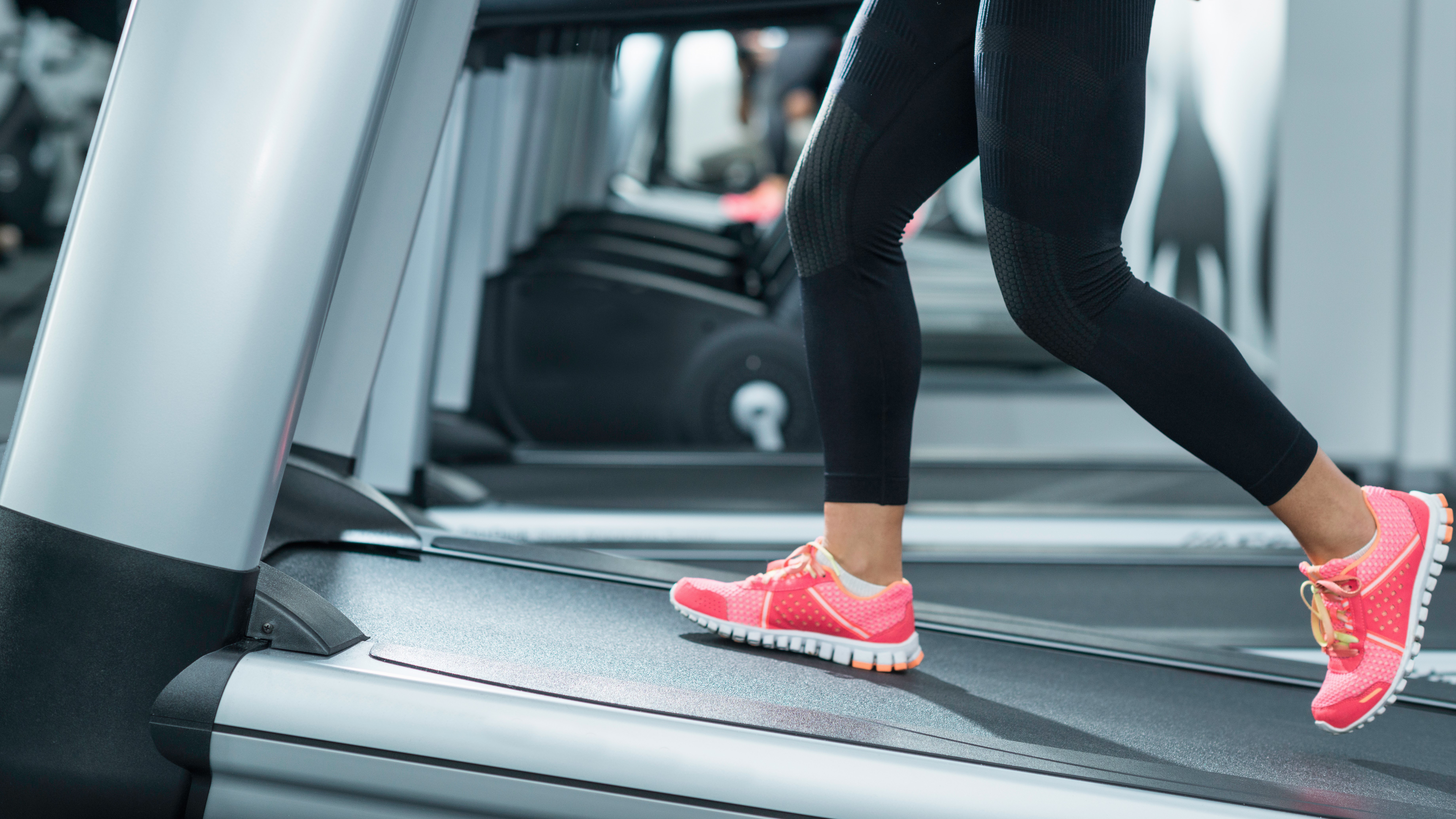
If there's one way to get yourself out of a fitness rut, it's running up a hill. These natural obstacles are a great way to challenge your muscles and boost your cardio fitness, but you don't need a hill nearby to get the effects.
Instead, you can turn to the treadmill, like I did every day for two weeks. I decided I was increasingly bored lacing up a pair of the best running shoes to only take on flat road runs, so I chose to shake things up with this two-week challenge.
During my two weeks, I primarily used the treadmill for my incline sprints as I could dictate the exact incline and speed. Plus, I actually don’t have many hills around me. And oh boy was it like addictive torture. All in the name of fitness.
Why do hill sprints?
Well, not only do hill sprints help to mix things up in my running routine, to ensure my usual runs don’t start to bore me, but I love the challenge and the intensity. Despite the fact I actually had small tears in my eyes after each sprint.
Plus, interval training in general is a great way to improve aerobic capacity, and therefore cardio fitness, according to research published in the journal PLoS One, so it’s great for the heart and lungs too.
And to keep things interesting, some days I would do steeper hills, which meant my speed was slower, while on others I would go as hard as I could up a slightly gentler hill. I tended to go for between eight and 14 reps with either a 30-60-second rest between or a 100-200m jog.
Want to know what went down during my 14 days of fun? Of course, you do. Here are my two weeks of hill sprints in a nutshell.
My glutes worked hard
If you want a glute workout that doesn’t involve hip thrusts and squats, then this is it! I noticed — like when you climb a set of stairs — how much my glutes were having to work to go upwards.
Because of this, I made sure that before a hill sprint session, I activated my glutes so that they could work properly and drive me up. This involved body-weight squats using a resistance band, glute bridges and low squat walks.
Jake Dearden, a HYROX Master Trainer, says: “Due to the incline, your glutes and quads will have to work harder to drive you upward, leading to greater resistance and in turn building more muscle.”
Dearden adds that's not the only area of your legs you engage: "Your hamstrings and calves also receive increased stimulus during hill sprints as they help you push off the ground and maintain stability, [leading] to increased strength and power, building lower body strength more efficiently than flat sprints due to the increased resistance."
It was incredibly sweaty
Not that sweat actually represents how hard a workout has been, but if you do want to really get a sweat on, then run up some hills. Because hill sprints are officially the sweatiest workout I have ever done.
The sessions weren't even that long — just 20 minutes — but, honestly, I could wring my top. It was that, disgustingly, wet. Many of the best treadmills have built-in fans, but that doesn't really make a dent during high-intensity exercise.
Lululemon recently debuted a sweat-mark-proof polo shirt with its new SweatZero material, and it'd definitely be helpful if this found its way into regular workout apparel. But, until then, it's worth grabbing a water bottle to keep hydrated during the hill sprints.
Hill sprints tested my fitness
Regular sprints on flat ground are tough. No matter how often I do them, they will always test me. But adding a hill? Well, it’s a different ball game and it shook my heart and lungs as they had to work overtime to keep me going.
And, because I'd arranged the challenge like a high-intensity interval training workout (HIIT), with short bursts of intense work and minimal breaks, the two-week challenge had a similar impact on my fitness.
Plus, according to a study published in the journal Frontiers in Sports and Active Living, hill running specifically is positively associated with greater aerobic capacity, which is essentially your V02 max; the maximum volume of oxygen you can use at one time.
My knees didn’t feel sore

With all my flat road running, I suffer from constant muscle and joint pain. But, with these hill sprints, I noticed that my knees and hamstrings (my usual two pain points) were feeling pretty good. According to Dearden, this would make sense.
“Hill training allows you to maximize training while minimizing injury risk,” he explains. “Your risk of injury is lowered since a hill's gradient causes your stride to be shorter, reducing the force on your body.”
Form is key
Running up hills involves a slightly different form than running on flat ground. And much like flat road running, your form does make a big difference, as I found during these two weeks when focusing on my form helped me run quickly.
Explaining the necessary form for hill sprints, Dearden says that posture is key. “Lean slightly forward from the hips. This will help maintain balance and momentum, utilizing the hill's incline.
"Don’t dip your head down and look at the floor, keep your head staring and focus on keeping your eyes focused on the ground a few meters ahead of you,” he notes.
Plus, Dearden says you should aim for an aggressive arm drive on hill sprints, raising your elbows to around a 90-degree angle from your body. “Your arm path should be from your hip to your chest.
"With your knees, lift them higher than you would on flat ground and drive off the balls of your feet. This increases power and will lead to a stronger, more efficient stride,” adds Dearden.
On a flat road sprint, I usually take bigger strides, pushing myself forward as quickly as I can. But on hill sprints, the best way to go quickly and maintain the speed was to go with shorter, quicker steps, keeping up a high cadence (the number of steps per minute).
My verdict on the two-week hill sprint challenge
Well, what I will say is that I can certainly recommend throwing some hills into your routine. Not only do they test your cardio fitness and muscular endurance, but you can feel yourself getting fitter the more you do these.
By the end of my two weeks, I was upping my incline a little and going at the same pace as previously. The challenge tested my muscles more than flat road sprints, and my lower body felt like it had endured a weights session.
The glute kick I felt during hill sprints was really great, and I'm going to continue adding hill sprints to the end of my glute sessions at the gym from now on.
More from Tom's Guide
- A
- B
- C





!["[T]he First and Fifth Amendments Require ICE to Provide Information About the Whereabouts of a Detained Person"](https://images.inkl.com/s3/publisher/cover/212/reason-cover.png?w=600)

